Where Do Lions Live Where Does a Lion Live Habitat
Lions: The Uniquely Social 'King of the Jungle'
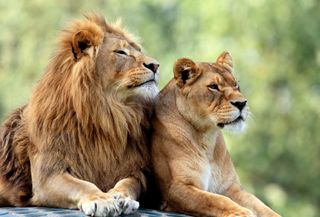
Lions are the second-largest cats in the world, after tigers. Known as the "king of beasts" or "king of the jungle," these regal felines once roamed Africa, Asia and Europe, but now only live in parts of Africa and India.
Experts have long recognized two subspecies of lion, Panthera leo leo (the African lion) and Panthera leo persica (the Asiatic lion). However, recent studies suggest that lions from West and Central Africa are more closely related to Asian lions than they are to lions from the eastern and southern parts of Africa, according to the Cat Specialist Group, a component of the International Union for Conservation of Nature (IUCN). In 2017, the Cat Specialist Group published their reclassification of lions into two new subspecies: Panthera leo leo (also called the Northern subspecies) and Panthera leo melanochaita (the Southern subspecies).
Panthera leo leo includes lion populations in Central Africa, West Africa (West African or Senegal lion), India (Asiatic lion) and extinct populations previously found in North Africa (Barbary lion), southeastern Europe, the Middle East, the Arabian peninsula and southwestern Asia. Panthera leo melanochaita includes lion populations from southern parts of Africa (Katanga lion and the Southeast African lion) and East Africa (Masai lion and Ethiopian lion).
Although the West African and Asiatic lions are genetically similar, many of their physical characteristics and behaviors are slightly different. [In Photos: The Lions of Kenya's Masai Mara]
How big are lions?
African lions can grow to between 9 and 10 feet long (3 meters) from head to tail, with the tail being about 2 to 3 feet long (60 to 91 centimeters), according to the Smithsonian National Zoo. They typically weigh between 330 to 550 pounds (150 to 250 kilograms), with males reaching the higher end of that range.
Asiatic lions (also called Asian or Indian lions) are slightly smaller than African lions. They are 6.6 to 9.2 feet (2 to 2.8 m) long from head to tail and weigh between 242 to 418 pounds (110 to 190 kg), according to the World Wildlife Federation (WWF).
Lions tend to have loose skin hanging from their midsection, possibly to help protect them from the piercing hooves of their frantic prey. Asiatic lions also have a fold of skin that runs along their belly, a feature rarely seen in African lions, according to African Lion and Environmental Research Trust (ALERT), a research and conservation organization. Compared to African lions, Asiatic lions tend to have shaggier coats, longer hair tufts on their elbows, and a longer tassel on the end of their tail. [Photos: The Biggest Lions on Earth]
Not only are male lions generally larger than females, but they also have a distinctive thick mane of hair around their heads that females lack. The biggest and most fabulous manes are more impressive to mating females and more intimidating to competing males, according to the San Diego Zoo. The mane also protects the male's neck during fights over territory or mating rights. African lions tend to have bigger, more magnificent manes compared to their Asiatic cousins.
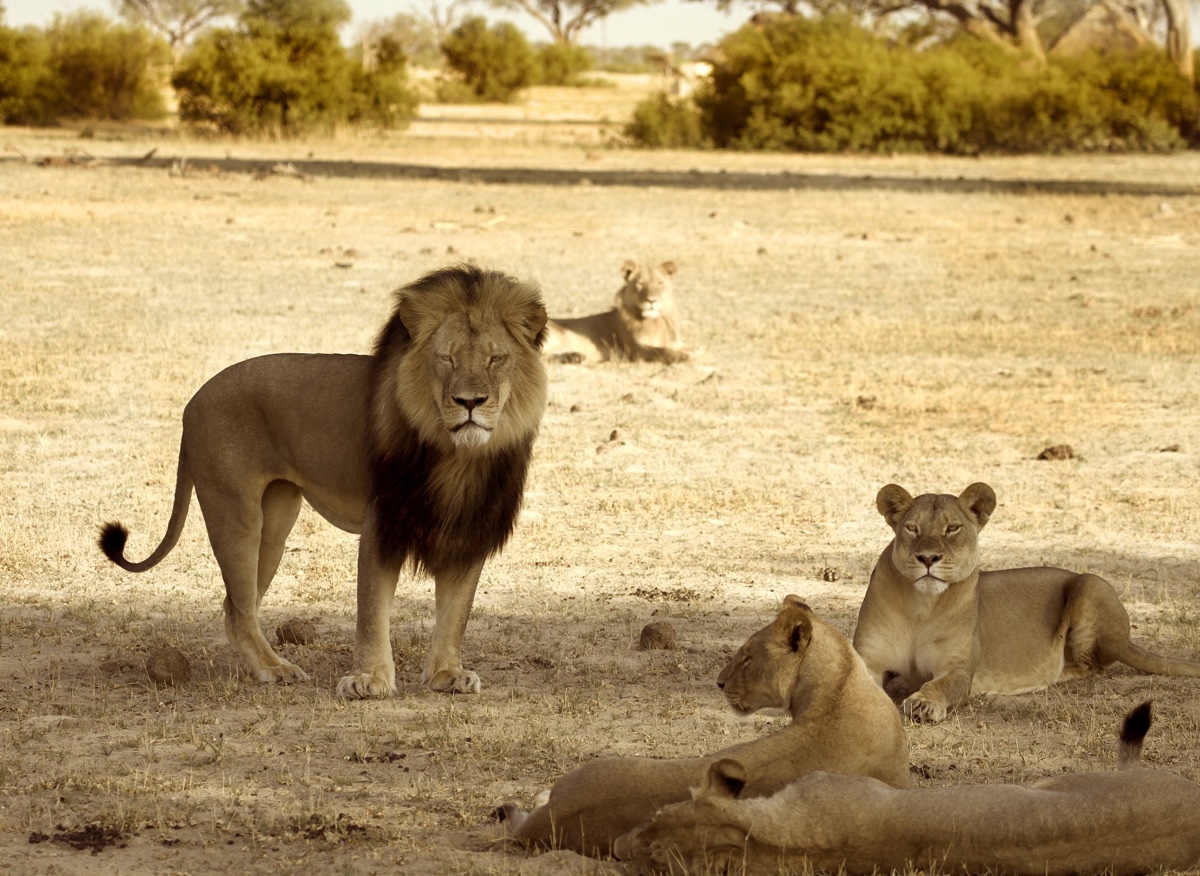
Where do lions live?
African lions live in Angola, Botswana, Mozambique, Tanzania, the Central African Republic, South Sudan and other parts of sub-Saharan Africa. Male lions defend the pride's territory, which may include an area of 100 square miles (259 square kilometers) of shrubs, grasslands and open woodlands, according to National Geographic.
Asiatic lions are found only in the Indian state of Gujarat, Western India, where most reside in the protected Gir Forest National Park, a 545-square-mile (1,412-square-km) wildlife haven. The Indian government designated this land, which includes a deciduous forest, grasslands, scrub jungle and rocky hills, as a wildlife sanctuary in 1965, according to Gir National Park. In addition to more than 500 lions and 300 leopards, the park is home to deer, antelope, jackal, hyenas, foxes, reptiles and more than 200 species of birds.
Lion pride dynamics
Lions are social cats and live in groups called prides. Asiatic and African lion prides are very different, though.
African lion prides typically consist of up to three adult males and around a dozen females and their young, according to National Geographic. Some prides can get extremely large, however, with up to 40 members. Females tend to remain in the pride in which they are born, so they are usually related to each other. Males, on the other hand, wander off to create their own pride when they are old enough.
Asiatic male lions normally won't live with the females of their pride unless they're mating or have a large kill, according to the Zoological Society of London.
Image 1 of 5
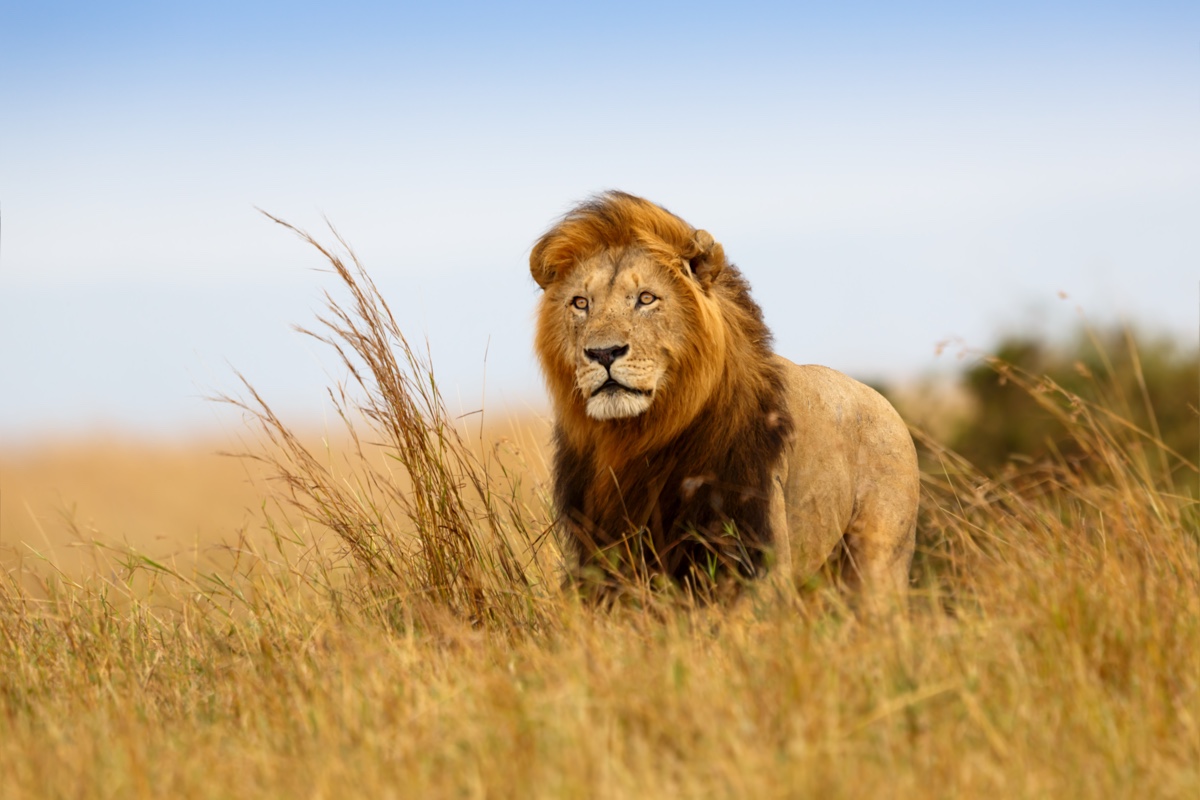
Image 2 of 5
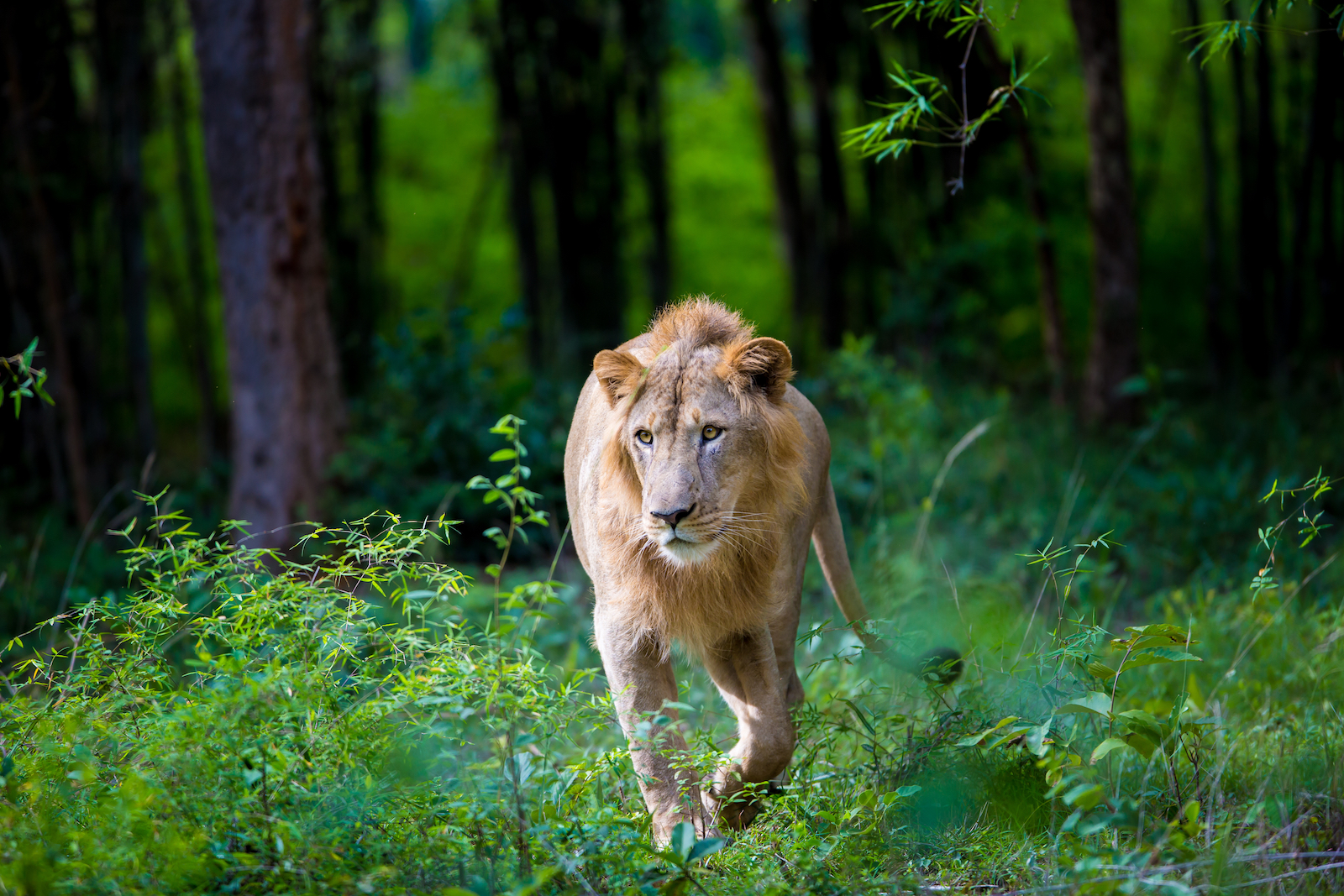
Image 3 of 5
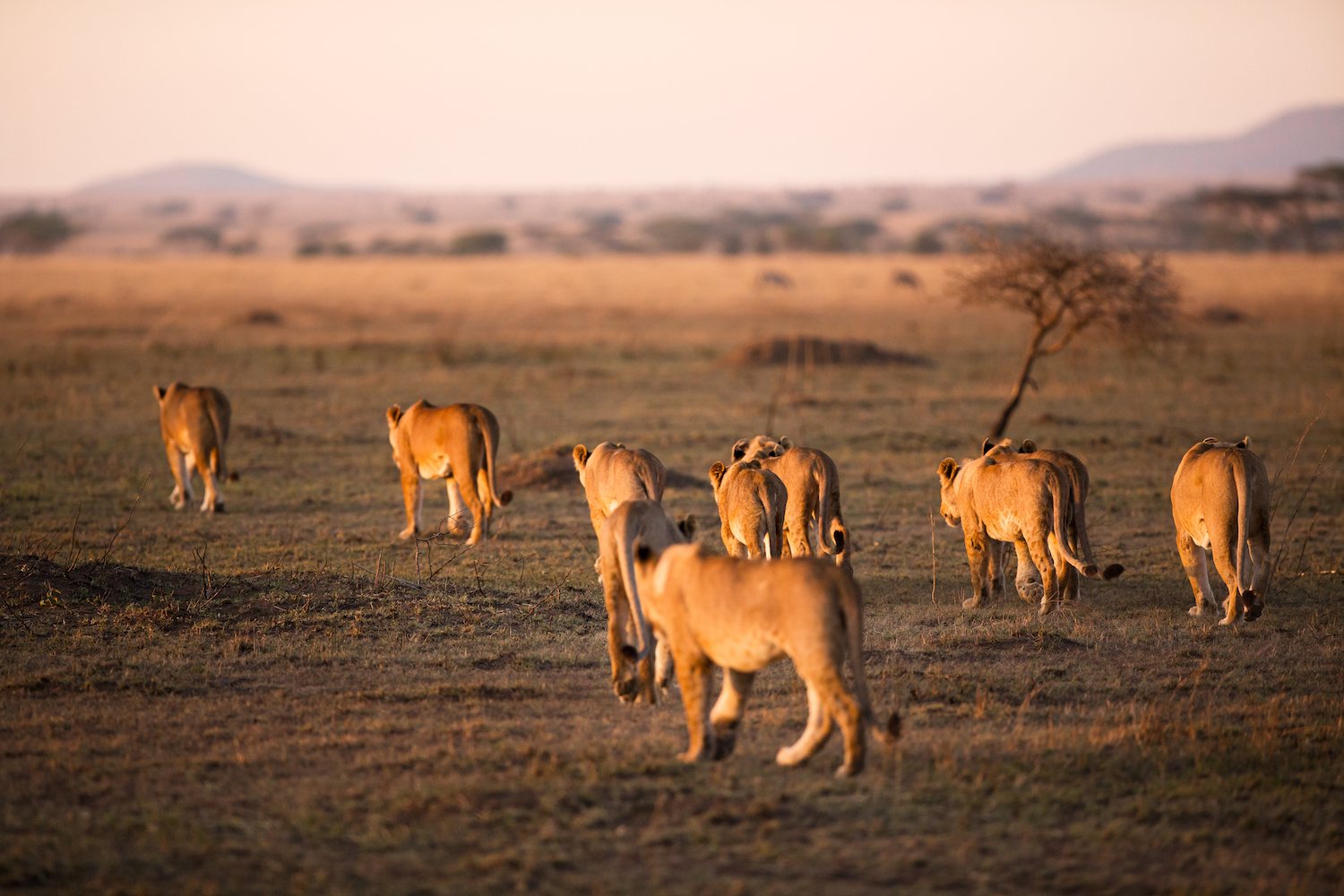
Image 4 of 5
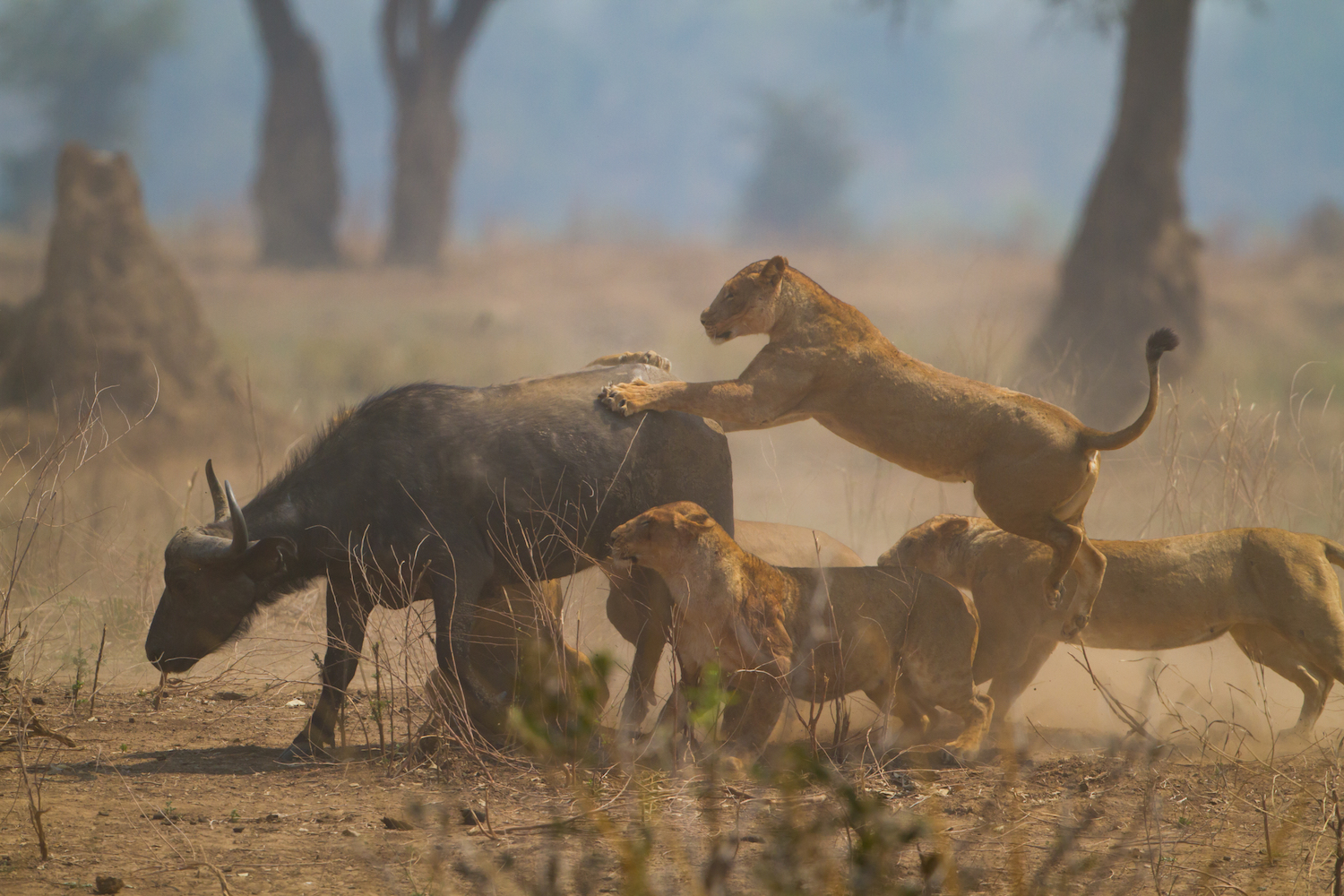
Image 5 of 5
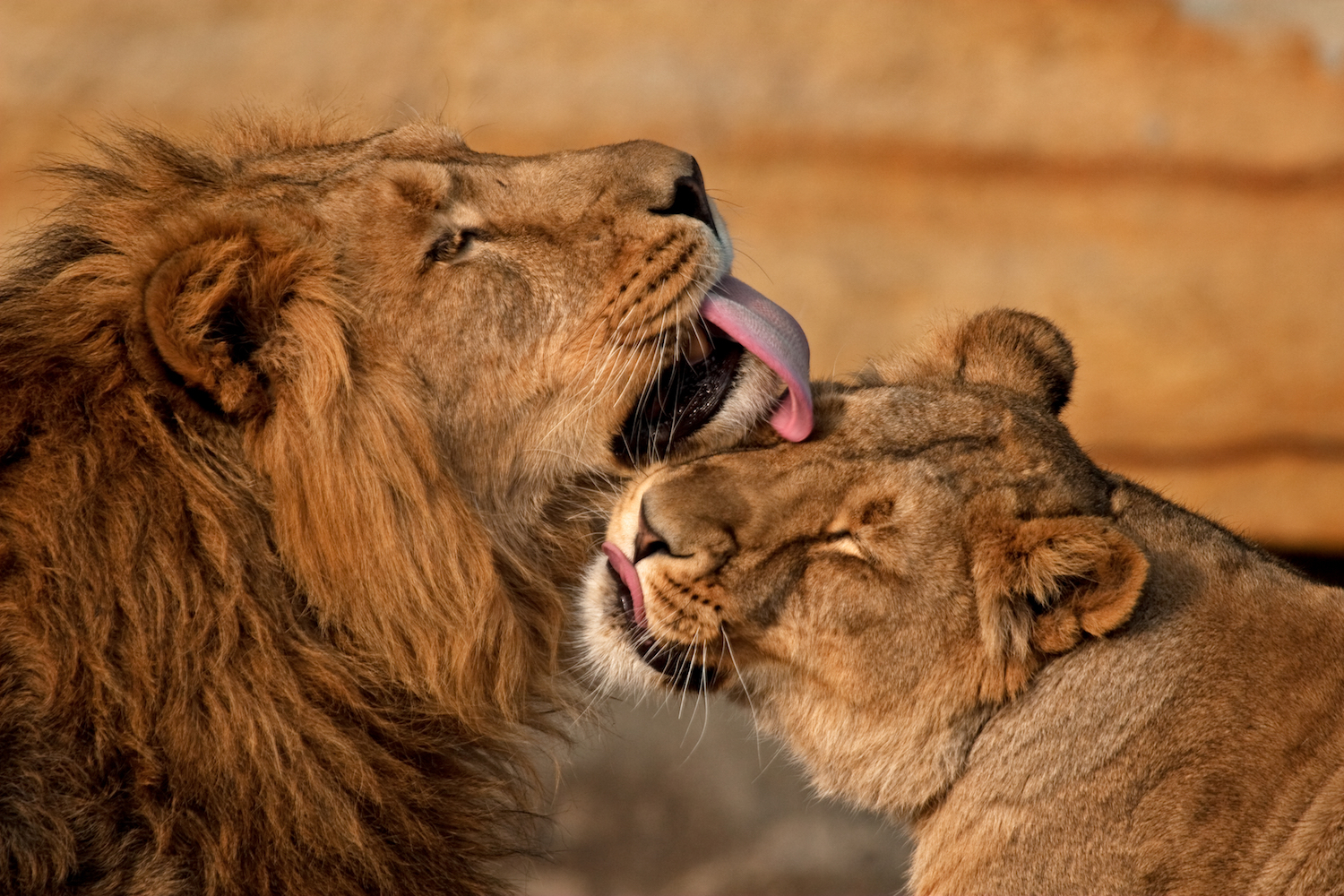
Hunting
African lions tend to hunt large animals such as antelopes, zebras, hogs, rhinos, hippos and wildebeest. Asiatic lions also hunt large animals, including buffaloes, goats, nilgai (a large Asian antelope), chital and sambar (two types of deer). Lions can kill animals that weigh up to 1,000 pounds, according to the Smithsonian National Zoo, but they will also hunt smaller animals like mice and birds when opportunities arise.
Females are the main hunters of the pride, and work cooperatively in hunting parties to surround and take down prey. Lions can run up to 50 mph (80 kmph) for short distances and leap as far as 36 feet (11 m), almost the length of a school bus, according to the Lion Habitat Ranch, a lion sanctuary in Nevada. To bring prey down, lions jump on the backs of very large animals, but will "ankle-tap" smaller animals, meaning they reach out their paw and swipe the preys' legs to trip them up, according to ALERT. To kill their prey, lions use their powerful jaws to snap the animal's neck or to strangle it to death.
Very occasionally, males will join in the hunting action, particularly if the prey is extremely large, like an elephant or water buffalo. Otherwise, the main job of the male is to protect the pride. African males who live alone tend to hide in dense vegetation to engage in ambush-style hunting, according to Carnegie researchers.
Lions tend to hunt at night and often lurk around water holes, streams and rivers, as those areas are hotspots for prey. Lions will also scavenge, and won't hesitate to steal other predators' kills or eat the leftovers, according to ALERT.
Mating and raising young
Male lions reach sexual maturity around two years old but are unlikely to breed before the age of 4 or 5 when they are large enough to attempt to take over a pride and have breeding rights, according to ALERT. Males as old as 16 can still produce viable sperm but usually lose their mating rights once they can no longer fight off younger males. Male African lions that are trying to take over a pride will kill all of the cubs to avoid competition. [In Photos: A Lion's Life]
Most female lions give birth by the time they are 4 years old. The gestation period for lions is around four months. Females will give birth to their young away from others, and will hide the cubs for the first six weeks of their lives. At birth, the cubs only weigh around 2 to 4 pounds. (0.9 to 1.8 kg), according to Animal Corner, and they're completely dependent on their mother.
All of the females in a pride will mate at around the same time. After the first six weeks of rearing cubs alone, the mother and cubs will rejoin the pride. Other females in the pride will contribute to raising all of their pride's young, and will even nurse other mothers' cubs, according to the San Diego Zoo.
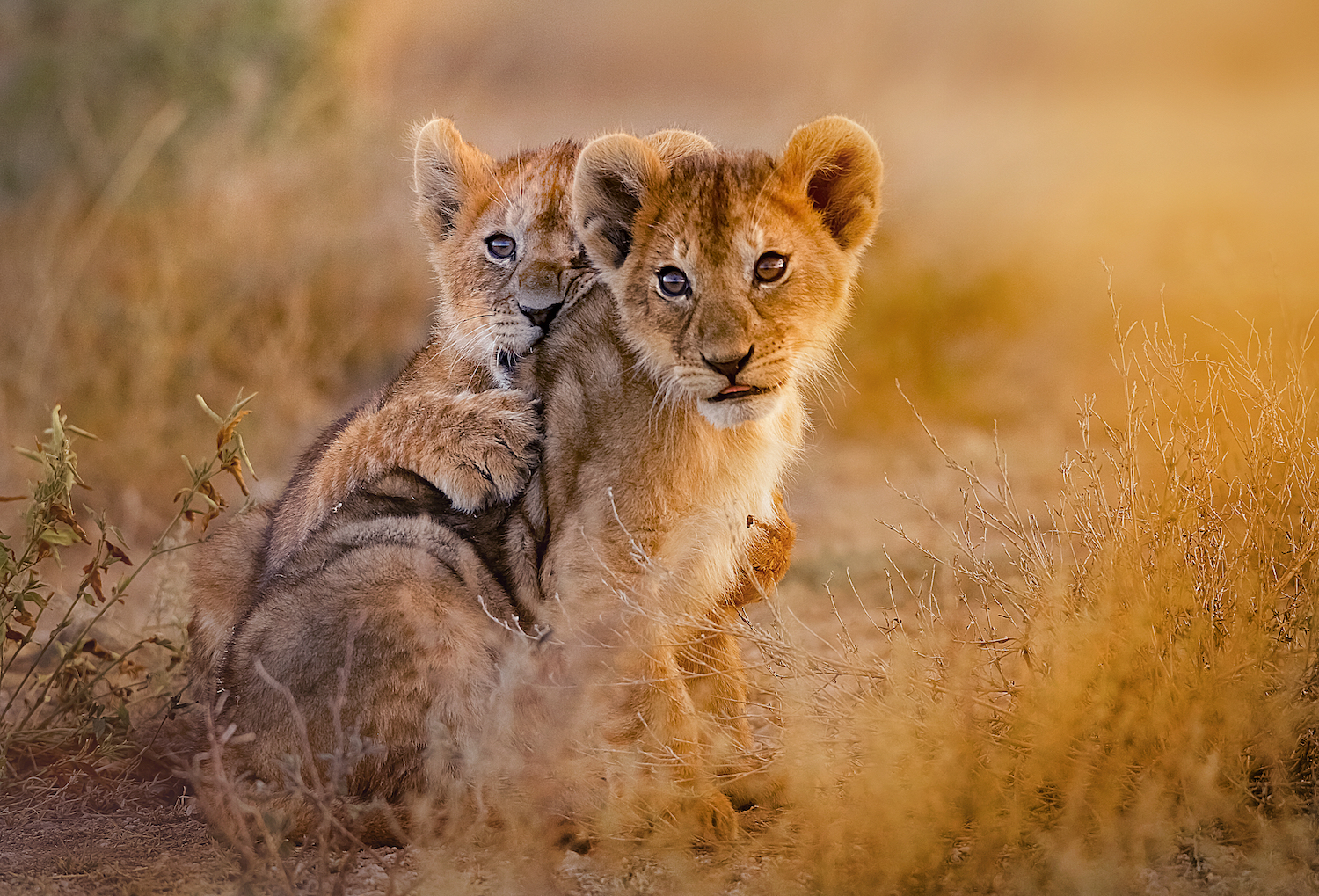
Conservation status
Lions are listed as vulnerable by the IUCN's Red List of Threatened Species. Three-quarters of African lion populations are in decline; their current population is estimated at 20,000 in the wild, according to the World Wildlife Federation (WWF). The population has been almost cut in half in the past two decades because of retaliatory killings by farmers (whose livestock lions eat), as well as from trophy hunting and habitat loss.
Asiatic lions are in an even more perilous position as human encroachment has reduced their habitat. The most recent census, taken in 2015, counted 523 lions living in Gir Forest National Park, according to PBS.org. Although small, this number is welcome news as the population has grown by about 27% since 2010, which suggests conservation measures are having a positive effect.
Additional resources:
- Watch: "Lions 101," from Nat Geo WILD.
- Learn more about the struggle to conserve lions, from Defenders of Wildlife.
- Watch: "Mother Lioness Hunts Warthog," from BBC Earth.
This article was updated on Aug. 19, 2019 by Live Science contributor Traci Pedersen.

Alina Bradford is a contributing writer for Live Science. Over the past 16 years, Alina has covered everything from Ebola to androids while writing health, science and tech articles for major publications. She has multiple health, safety and lifesaving certifications from Oklahoma State University. Alina's goal in life is to try as many experiences as possible. To date, she has been a volunteer firefighter, a dispatcher, substitute teacher, artist, janitor, children's book author, pizza maker, event coordinator and much more.
Where Do Lions Live Where Does a Lion Live Habitat
Source: https://www.livescience.com/27404-lion-facts.html
0 Response to "Where Do Lions Live Where Does a Lion Live Habitat"
Post a Comment